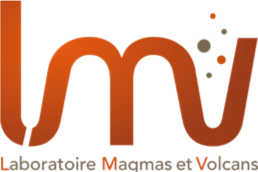VolcaPot du LMV – 26 janvier en salle Jean Jung à 14h30
The Quaternary Volcanics of northern Afar Depression (northeastern Ethiopia): Implication for the Tectonic Evolution of East African Rift System (EARS)
The northern Afar Depression is one of the most volcano-tectonically active portions of the East African Rift system, a place where oceanic rifting begins to form an incipient oceanic crust. In its center, over an area that is ~80 km long and ~50 km wide, there are seven major NNW-SSE-aligned shield volcanoes/volcanic edifices surrounded by compositionally distinct fissure-fed basalts. The Quaternary lavas in this area range from transitional to tholeiitic basalts, with significant across-axis variation both in mineralogy and chemistry. The variation in the contents of the major elements (TiO2, Al2O3, and Fe2O3), incompatible trace elements (Nd, Hf, Th, Ta), and the contents and ratios of the rare earth elements (REE) (e.g., (La/Yb)n = 5.3–8.9) indicate some variation in the petrogenetic processes responsible for the formation of these basalts. However, the variation in isotopic compositions of the mafic lavas is minimal (87Sr/Sr86 = 0.7036 – 0.7041, 143Nd/Nd144 = 0.51286 – 0.51289), which suggests only one source for all the Danakil Depression basalts. These basalts have isotope and incompatible trace element ratios that overlap with those of the Oligocene High-Ti2 flood basalts from the Ethiopian Plateau, interpreted as being derived from the last phase/ tail of the Afar mantle plume source. Both depth and degree of melting of the source reservoir underneath the northern Afar Depression played a major role for the production of incompatible element-enriched basalts (e.g., AleBagu Shield basalts) and the incompatible element-depleted tholeiitic basalts (e.g., Erta’Ale and Alu Shield basalts).


